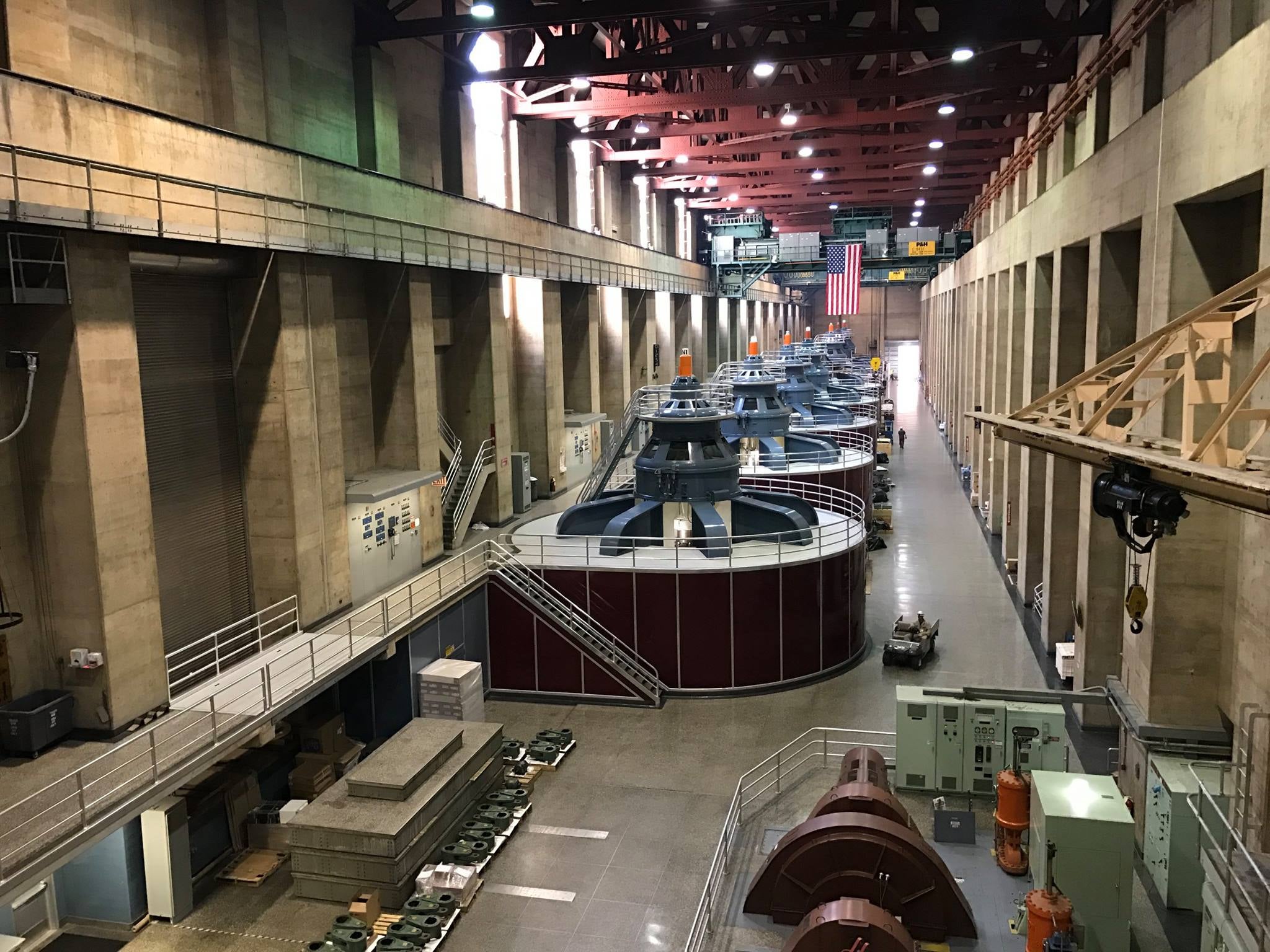Postcards from the ledge

“Big dams in Pakistan are normally earth and rock fill dams, so there is a need to build concrete arc dams like Hoover Dam in Pakistan that are more impressive, efficient and modern,“ say Muhammad Ahsan Amjed, National University of Science and Technology. Photo courtesy of Muhammad Ahsan Amjed
A group of 27 Pakistani engineering scholars from the U.S.-Pakistan Centers for Advanced Energy, better known as USPCAS-E, set off on an adventure over spring break, learning what nature can engineer, what people can engineer and the power their imagination has to inspire innovation.
An $18 million United States Agency for International Development grant supports the project with Arizona State University as the hub for the energy component of the project in partnership with the National University of Science and Technology — Islamabad (NUST), the University of Engineering and Technology in Peshawar and Oregon State University.
The scholars are part of the third cohort to visit the United States in order to study renewable energy at ASU’s Ira A. Fulton Schools of Engineering as part of a larger effort to boost development of solutions for Pakistan’s growing energy needs. Spring break offered a respite from their classes and lab work, and provided a chance to see engineering in action.
The scholars kicked off their journey by visiting one of nature’s greatest engineering wonders, the Grand Canyon. The canyon stood as a compelling example of the power found in nature, as seen by the river carving away at the landscape for millennia. The challenge for the scholars was to learn from nature and learn how to harness that energy.
Their next stop at Hoover Dam illustrated just that. The scholars saw first hand how the Colorado River was used as a source of renewable hydroelectric power through ingenuous civil engineering.
USPCAS-E Scholars, Left to right: Farah Akram, Anam Zahra, Maham Akhlaq, Atoofa Zainab, Photographer: Erika Gronek/ASU
“The sheer brilliance that the engineers displayed in [their] era with such a megastructure was a rarity, [and] is a sight to behold. It solved the water distribution problems for seven different states,” said Haider Saif Agha from NUST.
Learning about this pinnacle of clean energy was key for the scholars because many of them are studying photovoltaic, wind and hydroelectric energy options. The USPCAS-E project set out to explore renewable energy as a means for resolving the energy crisis happening in Pakistan today, leaving the country with rolling blackouts that last 6–16 hours a day.
The dam was created for the purposes of flood control, irrigation and power production, all of which are applicable to Pakistan’s needs.
“I see a comparison with Pakistan’s Kalabagh Dam,” said Asfand Yar Ali, of the University of Engineering and Technology, Peshawar. Kalabagh Dam is proposed dam that could help Pakistan with flood control. “We are facing minor and major floods every year in [the] monsoon [season]. Similarly, the dam will help Pakistan rejuvenate its agriculture and overcome [the] energy crisis.“
Hoover Dam was an example of what could be implemented back home for the scholars.
“I learned that we can solve all of our country’s energy problems by just mixing innovation and engineering in the right proportions,” said Usman Salahuddin of NUST.
To shake things up, the scholars next visited the California Science Center. Atoofa Zainab of NUST had a personal favorite there – the earthquake simulator.
“I learned about the how certain buildings are made in case of an earthquake. The lesson that I learned is that Pakistan is in dire need of these types of services and technologies.”
Inspiring the heart and the exchange of culture
Inside Hoover Dam. Photo credit: Usama Khalid, NUST/ASU.
Though engineering is the primary point of USPCAS-E, other aspects of the initiative like promoting gender equality and engaging in cultural exchange are key aspects as well. The scholars expressed heartfelt thanks to be a part of a program that educates not just their inner engineer, but also cements their role as a global citizen.
“I have honestly no words to define my experience I had on spring break. It was both fun and a learning experience,” said Farah Akram of NUST. “The places we visited showed us a new face of the world. The views of the Grand Canyon, [the] innovative construction of Hoover Dam, fun and virtual reality-based rides of Universal Studios, learning at the California Science Center and [having a] playful time in Santa Monica gave us the most beautiful time of our lives.”
“Something that really impacted my heart was the celebration of diversity in America. America celebrates its diversity, be it in L.A., Tempe, Las Vegas or any other city. I was impacted by views on tolerance, freedom of speech, action,” reflected Haider Saif Agha of NUST.
Muhammad Ahsan Amjed of NUST ruminated that, “if you really want to understand the culture and people of any particular area, you will have to travel across that region in order to better understand their traditions, their peculiarities, cultural idiosyncrasies [and] subtle differences in their way of living. Such excursions help us renew our perspective about our research, our lives and our goals.”
The cultural exchange component of the program provides unlimited opportunity for visitors and Americans to engage with each other, allows visitors to find their place in the global community, breaks down prejudices and misunderstandings, and in the long-term expands and strengthens relationships between the two countries.
More Science and technology

ASU professor honored with prestigious award for being a cybersecurity trailblazer
At first, he thought it was a drill.On Sept. 11, 2001, Gail-Joon Ahn sat in a conference room in Fort Meade, Maryland.…

Training stellar students to secure semiconductors
In the wetlands of King’s Bay, Georgia, the sail of a nuclear-powered Trident II Submarine laden with sophisticated computer…

ASU startup Crystal Sonic wins Natcast pitch competition
Crystal Sonic, an Arizona State University startup, won first place and $25,000 at the 2024 Natcast Startup Pitch Competition at…

